Year 6
Welcome to Year 6 - Morpurgo Class
Staffing:
Class Teacher: Mrs Maiden
Teaching Assistants: Mr Powell and Mrs Stanton
PPA Cover: Mrs Beech / Mrs Knowd / Sports Coach
Lunchtime Supervisor: Mrs Roberts
Useful Information:
PE Day:
PE for Morpurgo Class is currently on a Wednesday but this will vary throughout the year. A letter/email will be sent to notify parents/carers in advance of any changes in PE days.
Children can come to school in their uniform PE kit on their PE day, Please ensure that children are wearing navy blue or black sports trousers, a plain white PE t-shirt and sports trainers. Children must remove watches and stud earrings before the PE lesson. No other jewellery is to be worn to school
Homework:
Homework will be sent home each Friday.
All children have been supplied with a reading diary. Please listen to your child read their allocated reading book and sign in the diary. Books will be changed weekly or as the children complete them.
All children have a log-in for TT Rock Stars to practise their recall of multiplication and division facts weekly.
Learning: Curriculum Overview
Assessment Criteria
Mathematics Stage 6
|
P. V. |
1. Read, write, order and compare numbers up to 10 000 000 and determine the value of each digit. Round any whole number to a required degree of accuracy. |
|
2. Use negative numbers in context, and calculate intervals across zero. Solve number and practical problems that involve all of the above. |
|
|
Add, Sub, Mult, Div |
3. Multiply and divide numbers up to 4 digits by a 2-digit whole number using the formal written methods and interpret remainders as whole number remainders, fractions, or by rounding. |
|
4. Identify common factors, common multiples and prime numbers. |
|
|
5. Use their knowledge of the order of operations to carry out calculations involving the four operations. |
|
|
6. Solve addition and subtraction multi-step problems in contexts, deciding which operations and methods to use and why. |
|
|
Fractions |
7. Use common factors to simplify fractions; use common multiples to express fractions in the same denomination. |
|
8. Add and subtract fractions with different denominators and mixed numbers, using the concept of equivalent fractions. |
|
|
9. Multiply simple proper fractions and simplify the answer (e.g. ¼ x ⅟₂ = ⅟₈). Divide proper fractions by whole numbers (e.g. ⅓ ÷ 2 = ⅙). |
|
|
10. Identify the value of each digit to three decimal places and multiply and divide numbers by 10, 100 and 1000 where the answers are up to three decimal places. |
|
|
11. Multiply one-digit numbers with up to two decimal places by whole numbers. Use written division methods in cases where the answer has up to two decimal places. |
|
|
12. Recall and use equivalences between simple fractions, decimals and percentages, including in different contexts. |
|
|
R & P |
13. Solve problems involving the calculation of percentages (e.g. of measures) such as 15% of 360 and the use of percentages for comparison. |
|
14. Solve problems involving similar shapes where the scale factor is known or can be found. Solve problems involving unequal sharing and grouping using knowledge of fractions and multiples. |
|
|
ALGEBRA |
15. Express missing number problems algebraically. Use simple formulae expressed in words. |
|
16. Generate and describe linear number sequences. |
|
|
17. Find pairs of numbers that satisfy number sentences involving two unknowns. Enumerate all possibilities of combinations of two variables. |
|
|
MEASURE |
18. Solve problems involving the calculation and conversion of units of measure, using decimal notation up to three decimal places where appropriate. Convert between miles and km. |
|
19. Use, read, write & convert between standard units of measure, converting length, mass, volume & time from smaller to larger units, and vice versa, using decimal notation to up to 3 dec places. |
|
|
20. Recognise that shapes with the same areas can have different perimeters and vice versa. |
|
|
21. Calculate the area of parallelograms and triangles. Recognise when it is possible to use formulae for area and volume of shapes. |
|
|
22. Calculate, estimate and compare volume of cubes and cuboids using standard units, including centimetre cubed (cm) and cubic metres (m), and extending to other units. |
|
|
GEOMETRY |
23. Draw 2-D shapes using given dimensions and angles. Recognise, describe and build simple 3-D shapes, including making nets. |
|
24. Compare and classify geometric shapes based on their properties and sizes and find unknown angles in any triangles, quadrilaterals, and regular polygons. |
|
|
25. Illustrate and name parts of circles, including radius, diameter and circumference and know that the diameter is twice the radius. |
|
|
26. Recognise angles where they meet at a point, are on a straight line, or are vertically opposite, and find missing angles. |
|
|
P & D |
27. Describe positions on the full coordinate grid (all four quadrants). |
|
28. Draw and translate simple shapes on the coordinate plane, and reflect them in the axes. |
|
|
STATS |
29. Interpret and construct pie charts and line graphs and use these to solve problems. |
|
30. Calculate and interpret the mean as an average. |
